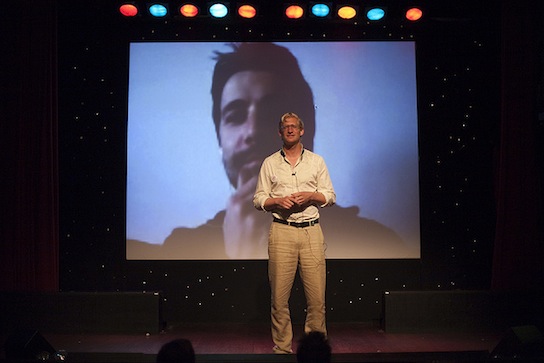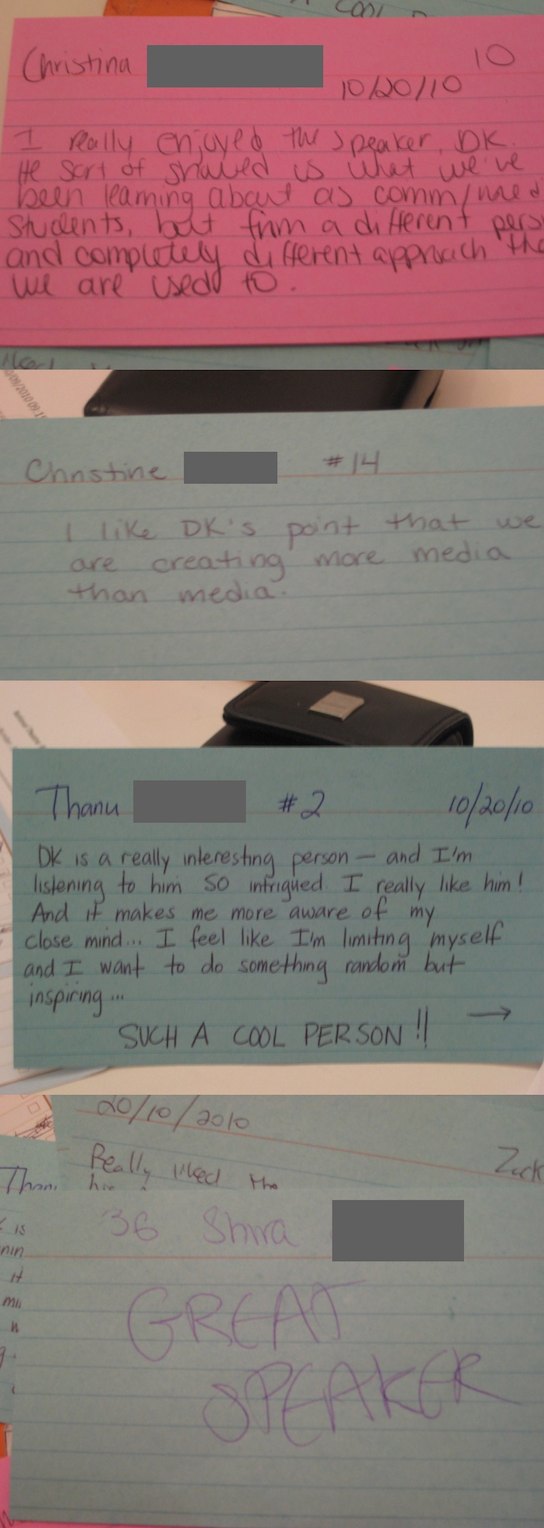
New learning spaces for a new generation
During my recent stateside mini-tour I delivered a couple of sessions at the CEFPI World Conference for leading school design, in San Jose (got the highest feedback rating for all speakers—whoop whoop) plus an internal masterclass in Santa Monica for DLR Group, a school design architectural firm.
Been thinking about this sector from a social media perspective ever since and wanted to offer a mind-dump of thoughts and insights plus some curated content to extend the conversation (note : for the purpose of this post school design means the physical buildings plus the pedagogical approaches in those spaces as well) :
Social Media. So What?
Social media augments and embellishes your current operations.
It’s a tool (or a set of) to not only save time and money but also to enable practitioners build better learning spaces.
How? Read on…
Conversational design
Conversations drive social media spaces.
Conversations drive design processes.
Not one of the school architectural firms or companies I met had a blog. Now I’m not claiming a blog is a panacea for all social media efforts but if I ran a design firm in this space a blog would provide an opportunity to feature stuff like Joshua Prince-Ramus TED talk. Here he details the processes behind the building of the Central Library in Seattle, thus producing a perfect catalyst for discussion (internally and/or externally) :
Of course I would be featuring and talking about our own designs and the process relating to them, but the blog would also feature stuff like makeuseof.com’s: The 6 Best Blogs For Architectural & Interior Design Ideas and picocool.com’s: Architecture resource to broaden the debate and inform myself and others that there are more examples of innovation outside the industry than in it .
During the previous mentioned sessions I also showed the participants many online conversations about their specific school designs which none of them knew about. Highlighted how architectural students, studying today, were featuring and discussing the agencies work on their own study blogs. How random people were taking photos of their buildings and adding them to related learning environment groups on Flickr. Illustrating that students were making videos about their learning spaces. This video from the UTSA College of Architecture on Why My School Rocks illustrates the point perfectly.
All online. Transparent. Sharable. With lots of opportunities for conversation and engagement (through the commenting functions of these spaces).
Technology Is Disappearing
Into itself.
Most of the gadgets we have around us today will merge into the fabric of our surroundings, such as the walls, the furniture, the mirrors, windows etc. and when that happens, our offices, homes and school spaces will look very different :
And here’s those clever chaps / lasses at IDEO and their take on the future of the humble book :
This is not a show and tell about the future but more a reminding kick in the pants as it’s happening now. Augmented reality apps like the one below will quickly start to make interactive whiteboards obsolete (are we still going to ask the kids to put their phones away for classes when it can do things like this?) :
Multiple Uses For Online Spaces
Watch The Seven Spaces of Technology in School Environments :
As he brilliantly describes in his ‘extra space’, data is becoming a new fertile ground for exploration and creation. To illustrate this check out the Education Nation Scorecard which allows parents in America to check out how different K-12 schools measure up in their area :
And what happens when someone develops a similar site to that of Rate My Teacher, this time focussing on the school environment, with the students themselves crowdsourcing the content with pictures and videos and insights into the spaces they are using five days a week plus rating it? (Anybody want to partner in making this a reality?)
Internal vs External
Again, from talking with many industry folk hardly any of them are using platforms such as Google Docs, Skype, Wikis, internal / private blogs (as digital scrapbooks or team development spaces) etc.
All potential collaborative spaces to work more effectively.
Schools Are Interfering With Education
Bold claim?
Watch :
(Maybe I should’ve just embedded this video as the whole blog post and be done with it).
The end users of the school design process have the means and mechanisms to communicate their thoughts and create content globally and instantly. They can access vast amounts of information through devices they have in their pockets and it’s only going to get more ubiquitous, cheaper and quicker.
That’s the line in the sand. That’s your starting point. That’s the challenge.
It’s Not All Doom And Gloom
There is an amazing amount of good stuff happening out there, like Bosch & Fjord’s 21st Century School on the Cutting Edge of Learning and prototypedesigncamp.com plus our previous podcastee Sir Ken Robinson doing his thing with a little help from RSAnimate:
And the British Council for School Environments recently launching their Free Schools Thinking: Places and Spaces for Teaching and Learning report (below), co-developed and supported by five of the UK’s leading architect firms :
Conclusion
We can all agree that not including the end users (students) in the design process is bonkers (what, in my old youth work days, they called ‘participation’ and which we now call conversation), this blog post does not argue this case as most school design agencies are all over it.
Instead it’s more a rallying cry around the emergence and continual shift social spaces and technology now offers. An ever moving target for school designers to lock their targets on.
We’ve already seem some noticeable adoptees : universities are using geo-location apps to better acquiant new students to their campus, Bill and Melinda Gates Foundation getting involved in prepare high school students for college.
The biggest takeaway from the recent stateside sessions was a school design architect saying : “wouldn’t it be cool if we blogged the whole process of designing and building a school, like every bit of it”—YES IT WOULD but more importantly why wouldn’t you?!?!?
The final and last word goes to scifi writer source) :
I think that our grandchildren will probably regard the distinction we make between what we call the real world and what they think of as simply the world as the quaintest and most incomprehensible thing about us.
What do you think?
Related post : School Design And Digital Content Strategies



